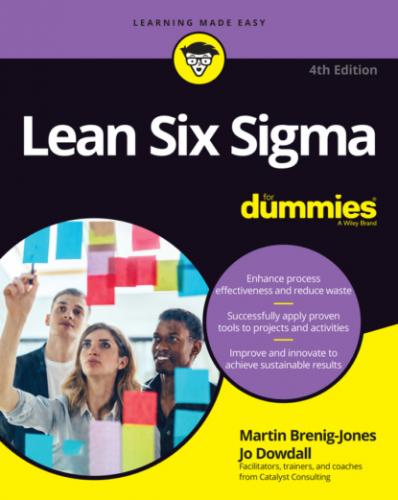As with all of the new ingredients in today’s Lean Six Sigma mix, there are entire books devoted to this subject. A fantastic summary of the mindset required to drive innovation is provided in the Design Thinking Playbook (authored by Lewrick, Link, and Leifer and published by Wiley). Lean Six Sigma practitioners can benefit greatly from these, and we’ll delve a little deeper into Design Thinking in Chapter 15.
Being driven by curiosity, and looking at things from different angles
Focusing on the people and their needs
Accepting complexity in the systems our work exists in
Visualizing and showing to aid understanding
Experimenting and iterating in order to learn, solve problems, and improve
Seeking to grow and expand capabilities
Developing an awareness of the process
Collaborating across departments and organizations
Reflecting on thinking, activities, and attitudes because they shape actions and assumptions
Practicing Project Management
Project Management is about getting things done and getting them done in a structured way. Tools and techniques for Project Management can help Lean Six Sigma practitioners to do the following:
Establish a project timeline.
Plan the work by breaking it down into tasks, including task owners, required resources, due dates, and so on.
Work effectively with a team (remembering the acronym Together Everyone Achieves More).
Monitor progress against the plan.
Manage the scope of the work to avoid the dreaded scope creep (the tendency of a project to grow into something bigger and more difficult to manage).
Report the benefits achieved.
Apply governance to the project, such as, for example, in identifying and managing risks and holding tollgate reviews.
Identifying and sharing lessons learned.
As you get to know more about Lean Six Sigma, you’ll notice there are a few overlaps between Project Management and Lean Six Sigma. The tools and methods of Project Management can certainly help when it comes to managing Lean Six Sigma improvements, and indeed some of them are included in the Lean Six Sigma / DMAIC toolkit (such as planning, managing stakeholders, and establishing a project sponsor).
Chapter 2
Understanding the Principles of Lean Six Sigma
IN THIS CHAPTER
In this chapter we look at the synergy produced by combining the approaches of Lean and Six Sigma to form Lean Six Sigma — along with the best of the approaches outlined in Chapter 1. The merged approach provides a comprehensive set of principles, and supporting tools and techniques, to enable genuine improvements in both efficiency and effectiveness for organizations.
Considering the Key Principles of Lean Six Sigma
Lean Six Sigma takes the features of Lean and of Six Sigma and integrates them to form a magnificent seven set of principles. The principles of each approach aren’t dissimilar (check out Chapter 1 to read more about the individual components), and the merged set produces no surprises. The seven principles of Lean Six Sigma are described in the following sections.
Focus on the customer
The elements of your service or offering that customers consider most important are known as CTQs (Critical to Quality requirements) in Lean Six Sigma. (See Chapter 4 for more on CTQs.) Written in a way that ensures they’re measurable, the CTQs provide the basis for determining the measures you need to help you understand how well you perform against these critical requirements. As you improve your performance in meeting the CTQs, you’re also likely to win and retain further business and increase your market share.
Identify and understand how the work gets done
The value stream describes all of the steps in your process — for example, from receipt of a customer order to the issue of a product or the delivery of a service, through to payment. By drawing a map of the value stream, you can highlight the non-value-added steps and areas of waste and ensure the process focuses on meeting the CTQs and adding value. To undertake this process properly, you must “go to the Gemba.” The Japanese word Gemba means the place where the work gets done — where the action is — which is where management begins. You could try Process Stapling (outlined in Chapter 5), which involves spending time in the workplace to see how the work really gets done, not how you think it gets done. This helps you to understand the problems that you want to tackle and determine a more effective solution for your day-to-day activities.
Manage, improve and smooth the process flow
Among the things to look out for when carrying out a Process Stapling exercise (or going to the Gemba) are clues that highlight bottlenecks or interruptions to the flow of work through the process. Are there delays at certain points? Are there high levels of work in progress? We’ll look more closely into bottlenecks in Chapter 11.
Processing work in batches doesn’t help items flow smoothly through the process. If possible, use single piece flow (processing one item at a time), moving away from batches, or at least reducing batch size. The concept of pull, not push (see Chapter 1), links to your understanding the process and improving flow. And it can be an essential element in avoiding bottlenecks. Overproduction or pushing things through too early is a waste.
Remove non-value-adding steps and waste
Focusing
